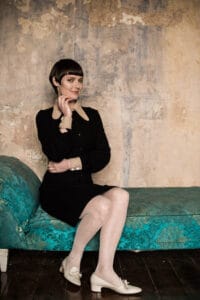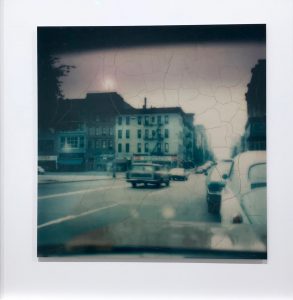
When characters don’t understand why they act, writers usually get a little kick from the dramatic irony they’re holding over the audience. It’s a challenge, a little carrot-shaped treat at the end of a stick to lead readers and watchers (let’s be honest, the most popular writing is split fairly evenly between the two nowadays) to nibble at some deeper speculation than enjoying the surface level emotional rollercoaster that holds the narrative together. Usually, the audience are begged to ask themselves why the actions presented are being undertaken, why the tragedy must play out, and if indeed there might be anything worth intellectualising underneath the bonnet.
Bones and All is a road-trip film, a cannibal-romance-road-trip to be precise, which hinges on the relationship between the two main characters. In a piece of sincerely observed recognition between the two, they form an emotional bond over their shared needs and desire to kill and eat strangers dotted around the American Midwest. It’s something of a Silence of the Lambs meets Badlands-style love story, or possibly Lolita for all the indulgence in toying with established Christianised American morality and its underbelly of temptation. At least that’s what it would say on the video box, or the little 50-word Netflix description luring you in. It’s really nothing like either, and the difference says everything about the time it was made in.
For many readers, imagining the past shouldn’t be a trifle too hard; if you will, picture the setting of a historical novel; the constructed reality of the 1990’s which is now lost to time but exists in legacy through a variety of media stored on electronically scanned compact discs and uploaded to the internet, alongside lingering (should you gather the courage to venture between the deepest shelves of a used technology store) somewhat musty DVD cases. You have entered what was once called a ‘movie-theatre’, sat down, and with very little impetus of your own been subjected to a six-and-a-half-foot projection of Anthony Hopkins’ face blasted onto your retina as light bounces off the surface of a rather worn reflective screen. You are watching Silence of the Lambs. Hopkins’ lynchpin of a character references something once said by Marcus Aurelius:
“Of each particular thing, ask what is it in itself? What is its nature?”
He then proceeds to run through a developed symbolic framework of the serial killer the FBI are hunting down in the background of the story. While he begins with a simple statement of what the murderer might be (“one who covets”, for those interested), this is soon embellished, it builds up and spreads out until a narrative projection of how and where the killer will act next unfolds because he is caught within the grand machinery of fulfilling a certain story about himself. He kills because he believes that it will transform him, quite literally as it turns out, as he’s stitching together a suit made from the victim’s flesh in order to present as a woman.
Bones and All has a similar killer, by the name of Sully. A softly spoken madman who collects the hair of those he eats (presumably young women by the length, or men with similarly stomach-churning grease-laced ponytails as his own). He acts as a mentor to the main character at first, and they feed together on a dying old woman, like dogs pulling at a carcass on their hands and knees. Then it’s revealed that he’s quite lonely. This is as much explanation as is presented for why he kills, why he collects the hair (translated by fellow cannibal played by Timothee Chalamet as something of a psychotic kink), why he pursues the cursed lovers and at the film’s end ruins their affair by stabbing one of them through the chest, before having his heart literally ripped out; he wants company. In fact, it may not even be why he kills. For the most part, Bones and All presents cannibalism in a symbolic void. The killers are born that way, endowed almost like the simple monsters of other teen fiction, with their predilections at birth. They may well be a different species and present the fantastical ability to sniff each other out. An “eater” can smell one of its kind from two blocks away, like a vampire.
This is all well and good, perhaps setting the stage for a drama of fighting against one’s nature to fulfil an unnatural but nonetheless idealised morality. But the film never reaches so high. Though thoroughly entertaining, affecting, moving at times and utterly grim in ways sure to leave you mesmerised from the first bites of human flesh to the bitter end, it has no interest in telling a psychological story. Moreover, it shows little interest in telling one where the characters respond to their situation. Neither of the lovers knows why they have to feed. They offer differing perspectives; between raw hunger likened to sexuality, and the rush eating people gives them. But there is no history here. There is no associative connection, nor artistic temperament in either individual or any of the cannibals in the story. Though structured somewhat like a tragedy, and ripe for biting dramatic irony, the writing never sinks its teeth into exactly where these cannibals are headed, or what led them to this point. Though their actions are intensely moving, those involved present more like cannibalistic machines than real people (but perhaps, to director Luca Guadagnino’s credit, that’s the point).
This speaks to a greater void in modern literature, and the absence of the symbolic content to character psychology that while rife in the 1990’s, by today has been replaced by a form of neo-cynicism.
Characters no longer know why they act, and the world of the human psyche is treated by most as far too complicated to understand. But far from drawing attention to the lived-experience and personal subjective frustrations brought about by this fact, modern dramas tend to treat it as a naturalised state of being and reduce the philosophical agency of their characters to nil. Writers have known for centuries about the complexities and alienation that burst like wellsprings from the determinism of an individual’s nature; take Frankenstein’s monster, who questions it daily and to great glacier-shaking howls of existential pain. But today such introspection is seldom shown, nor encouraged. An example of this trend can be found in the works of Sally Rooney, whose protagonists are similarly confused, psychologically set in motion by events out of their control, and overflow with palpable angst, but their revelations are halted only at the acknowledgement of their own ignorance. Much like Rooney’s quintessentially modern characters, Bones and All centres on individuals who are bereft of symbolic content and introspection, and thus the possibility of growth, development and change. These are men and women less human than the cannibals of our recent past, whether they consume other people or not because they have no say of their own. In an age seemingly dominated ideologically, philosophically, and mechanically by events and systems that humans have created but can no longer control, be it climate change, internet algorithms, blind-willed social determinism or plain-old human nature, the message to take from this film is clear. Art, more than ever, needs voices that champion our uniquely human ability to question, learn from, and change our circumstances. Without this, we’re at risk of cannibalising ourselves.









